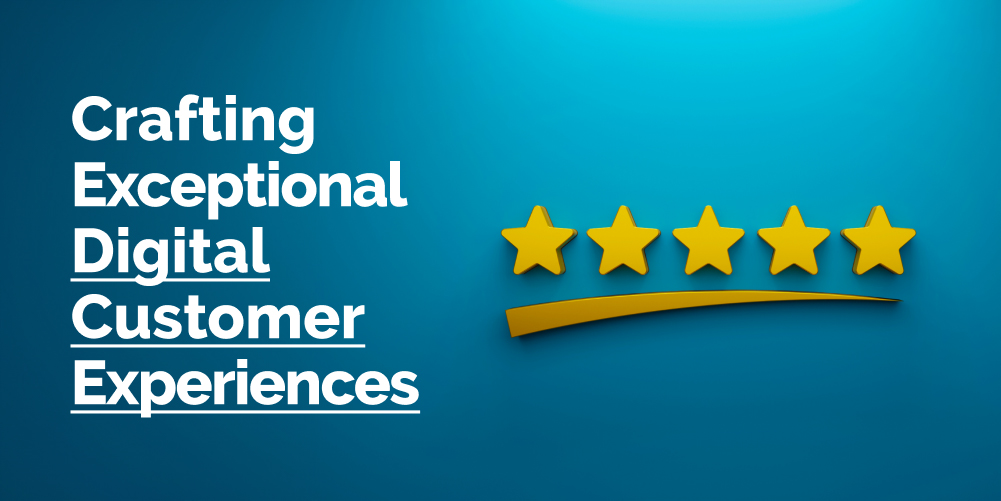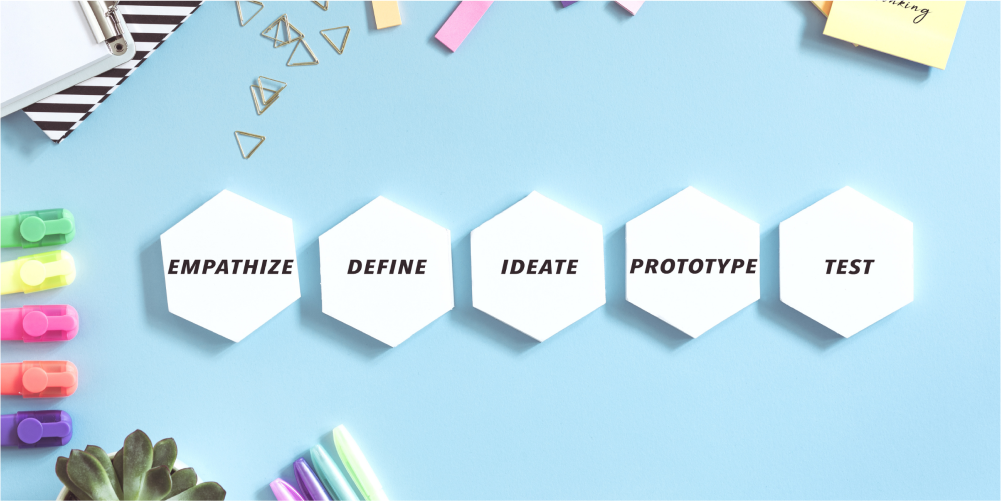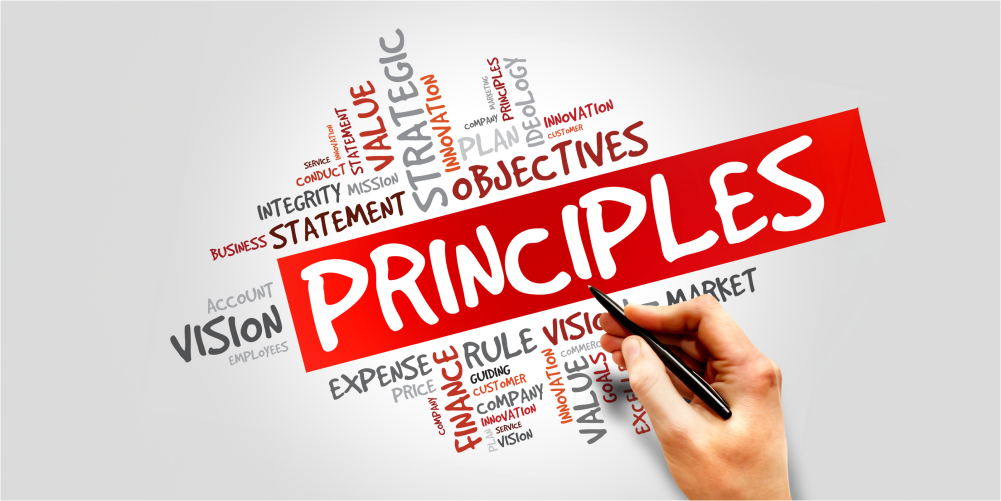Business Transformation, zBlog
Service Design: Creating Exceptional Customer Experiences in the Digital Age

In today’s highly competitive business landscape, organizations are continually seeking ways to differentiate themselves and forge lasting connections with their customers. In this pursuit, service design has emerged as a powerful approach to creating exceptional customer experiences that not only meet but exceed expectations. By putting the customer at the center of the design process, service design enables businesses to craft seamless, intuitive, and memorable interactions across all touchpoints, fostering brand loyalty and driving long-term success.
At its core, service design is a human-centered, collaborative, and holistic approach to crafting services that align with customer needs, desires, and behaviors. It involves a deep understanding of the customer journey, identifying pain points and opportunities for improvement, and orchestrating the various components – people, processes, technologies, and touchpoints – to deliver a cohesive and delightful experience.
The Significance of Service Design in the Digital Age

In the digital age, customer expectations have evolved dramatically. With the proliferation of technology and the abundance of choices available, customers now demand personalized, convenient, and seamless experiences across multiple channels and touchpoints. Service design plays a crucial role in helping organizations navigate this complex landscape and deliver experiences that resonate with their customers.
By leveraging service design principles and methodologies, businesses can:
- Enhance Customer Satisfaction and Loyalty: Well-designed services that prioritize customer needs and preferences foster positive emotions, leading to increased satisfaction and brand loyalty, ultimately driving business growth and profitability.
- Streamline Operations and Processes: Service design involves mapping and optimizing processes, eliminating inefficiencies, and aligning resources to support the desired customer experience, resulting in improved operational efficiency and cost savings.
- Drive Innovation and Differentiation: By deeply understanding customer needs and behaviors, service design enables organizations to identify opportunities for innovation, creating unique and differentiated experiences that set them apart from competitors.
- Improve Cross-Channel Consistency: Service design ensures a seamless and consistent experience across multiple touchpoints, channels, and platforms, enabling customers to engage with businesses on their preferred channels without disruption or confusion.
- Facilitate Collaboration and Alignment: Service design promotes cross-functional collaboration, bringing together diverse stakeholders – from customer service to marketing, operations, and IT – to align on a shared vision and ensure a cohesive customer experience.
The Service Design Process

Service design is a comprehensive and iterative process that encompasses several key stages:
- Discovery and Research: This initial phase involves gathering insights into customer needs, behaviors, and pain points through various research methods, such as user interviews, ethnographic studies, data analysis, and customer journey mapping.
- Ideation and Co-creation: Building on the insights gained from the discovery phase, ideation sessions are conducted to generate innovative ideas and concepts for new or improved services. These sessions often involve co-creation with customers, stakeholders, and cross-functional teams to ensure diverse perspectives and buy-in.
- Prototyping and Testing: Prototyping allows for the visualization and testing of service concepts, enabling iterative refinement based on user feedback and validation. This stage may involve creating low-fidelity prototypes, such as storyboards or wireframes, or more advanced prototypes, like interactive mock-ups or minimum viable products (MVPs).
- Implementation and Deployment: Once the service concept has been refined and validated, it enters the implementation phase, where detailed service blueprints, processes, and supporting technologies are developed and deployed across the organization.
- Continuous Improvement: Service design is an ongoing process that involves monitoring and optimizing the delivered service based on customer feedback, usage data, and evolving needs. This stage ensures that the service remains relevant and responsive to changing customer expectations.
Principles of Effective Service Design

To achieve exceptional customer experiences through service design, organizations should embrace the following guiding principles:
- Customer-Centricity: Placing the customer at the heart of the design process, and aligning all decisions and actions with their needs, preferences, and behaviors.
- Empathy and Human-Centered Design: Developing a deep understanding of customer emotions, motivations, and contexts through empathetic research and immersive techniques, enabling the creation of truly human-centered experiences.
- Co-creation and Collaboration: Involving customers, stakeholders, and cross-functional teams throughout the design process to leverage diverse perspectives, foster buy-in, and ensure alignment across the organization.
- Holistic and Integrated Approach: Considering the entire customer journey and orchestrating all touchpoints, channels, and supporting processes to deliver a seamless and cohesive experience.
- Iterative and Agile: Embracing an iterative and agile approach, allowing for continuous refinement and adaptation based on customer feedback, usage data, and evolving needs.
- Measurement and Data-Driven Insights: Establishing clear metrics and leveraging data-driven insights to measure the success of the service design efforts and inform ongoing improvements.
- Sustainability and Scalability: Designing services that are sustainable and scalable, considering long-term viability, resource efficiency, and the ability to adapt to future growth and changing market conditions.
The Benefits

By adopting a service design mindset and methodology, organizations can unlock numerous benefits, including:
- Improved Customer Experience (CX): Well-designed services that prioritize customer needs and preferences lead to positive emotions, increased satisfaction, and enhanced brand loyalty, ultimately driving business growth and profitability.
- Operational Efficiency and Cost Savings: Service design involves optimizing processes, eliminating inefficiencies, and aligning resources, resulting in improved operational efficiency and cost savings.
- Innovation and Competitive Advantage: By deeply understanding customer needs and behaviors, service design enables organizations to identify opportunities for innovation, creating unique and differentiated experiences that set them apart from competitors.
- Consistent Cross-Channel Experience: Service design ensures a seamless and consistent experience across multiple touchpoints, channels, and platforms, enabling customers to engage with businesses on their preferred channels without disruption or confusion.
- Increased Employee Engagement and Alignment: Service design promotes cross-functional collaboration and alignment, fostering a shared understanding of customer needs and organizational goals, leading to increased employee engagement and motivation.
- Data-Driven Decision-Making: Service design emphasizes the use of data-driven insights and metrics to measure the success of service design efforts, enabling informed decision-making and continuous improvement.
- Future-Proofing and Adaptability: By designing sustainable and scalable services, organizations can future-proof their offerings and adapt more easily to changing market conditions, emerging technologies, and evolving customer expectations.
Case Studies
Let’s examine a few real-world examples of organizations:
- Airbnb: The online hospitality platform revolutionized the travel industry by designing a service that enables seamless peer-to-peer home rentals. Through empathetic research and co-creation with hosts and guests, Airbnb created a user-friendly platform and streamlined processes, delivering exceptional experiences for both parties.
- Starbucks: The global coffee company has leveraged service design principles to enhance the in-store experience for customers. By mapping the customer journey and optimizing touchpoints, from ordering to pick-up and seating, Starbucks has created a seamless and consistent experience across its locations.
- Uber: The ride-sharing service disrupted the transportation industry by designing a user-friendly mobile app and streamlined service experience. Through continuous iteration and feedback loops, Uber has optimized its service to meet evolving customer needs, such as real-time tracking and seamless payment integration.
- USAA: The financial services company has embraced service design to provide exceptional experiences for its military and veteran customer base. By deeply understanding the unique needs and challenges of this community, USAA has designed user-friendly digital platforms and personalized services, fostering strong brand loyalty and trust.
These examples demonstrate the versatility and potential of service design across various industries, from hospitality and retail to transportation and financial services.
Conclusion
Trantor is a leading provider of digital transformation and technology solutions, with expertise to help organizations create exceptional customer experiences. Leveraging our deep understanding of human-centered design principles and methodologies, Trantor partners with businesses to map customer journeys, identify pain points and opportunities, and design seamless, intuitive, and memorable services.
Our team of experienced service designers, UX experts, and domain specialists collaborate closely with clients to conduct in-depth research, facilitate ideation sessions, and develop prototypes for iterative testing and refinement. By embracing co-creation and cross-functional collaboration, Trantor ensures that the resulting service designs align with customer needs, organizational goals, and operational realities.
From developing user-friendly digital platforms and optimizing processes to orchestrating multi-channel experiences and implementing supporting technologies, Trantor provides end-to-end service design solutions tailored to each client’s unique requirements. With Trantor as your partner, you can confidently transform your customer experiences, drive innovation, and gain a competitive edge in today’s dynamic market.
As businesses strive to differentiate themselves in an increasingly competitive landscape, service design provides a powerful framework for creating exceptional customer experiences that resonate deeply and foster lasting loyalty. By partnering with Trantor, organizations can tap into our extensive expertise in service design, benefiting from a proven methodology that combines human-centered design principles, data-driven insights, and cutting-edge technologies.
Trantor’s service design approach is rooted in empathy, ensuring that every touchpoint and interaction is meticulously crafted to align with customers’ needs, behaviors, and preferences. Through immersive research techniques, such as ethnographic studies, customer journey mapping, and co-creation workshops, our team develops a deep understanding of your target audience, uncovering pain points and opportunities for improvement.
Building on these insights, Trantor’s service designers collaborate closely with cross-functional teams within your organization to ideate and prototype innovative service concepts. By leveraging agile methodologies and rapid prototyping techniques, we iterate and refine these concepts based on continuous customer feedback, ensuring that the final service design is highly tailored and validates before implementation.
Trantor’s service design solutions go beyond just creating delightful customer experiences. We take a holistic approach, optimizing processes, aligning resources, and seamlessly integrating supporting technologies to ensure operational efficiency and scalability. This end-to-end approach ensures that the designed service is not only exceptional but also sustainable and adaptable to changing market conditions and evolving customer expectations.
Furthermore, Trantor’s service design initiatives are driven by data-driven insights and measurable outcomes. We establish clear metrics and leverage advanced analytics to track the success of our service design efforts, enabling continuous improvement and informed decision-making. By aligning service design with your business objectives and key performance indicators (KPIs), we ensure that the resulting customer experiences not only delight but also drive tangible business value.
With Trantor as your trusted partner, you can confidently embark on a service design journey that transforms your customer interactions, fosters innovation, and positions your organization as a leader in delivering exceptional experiences. Our team of experienced service designers, UX experts, and domain specialists bring a wealth of knowledge and best practices from across industries, ensuring that your service design initiatives are informed by cutting-edge insights and proven methodologies.




